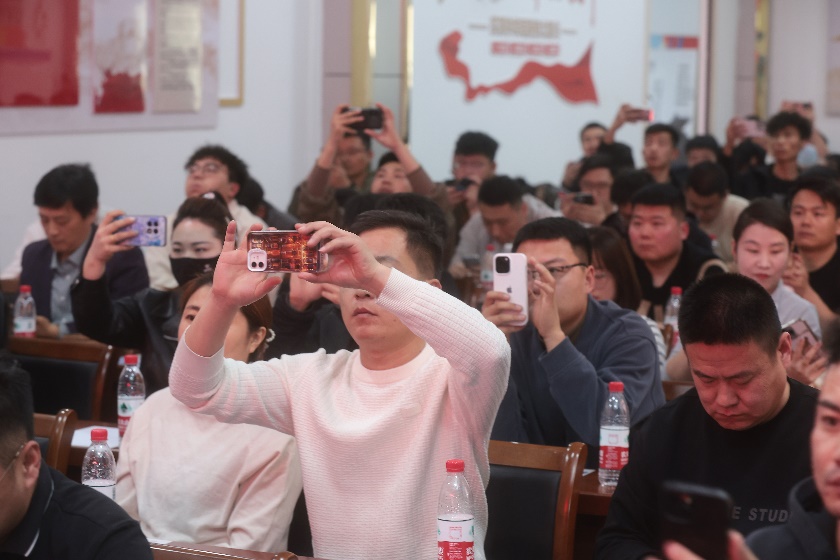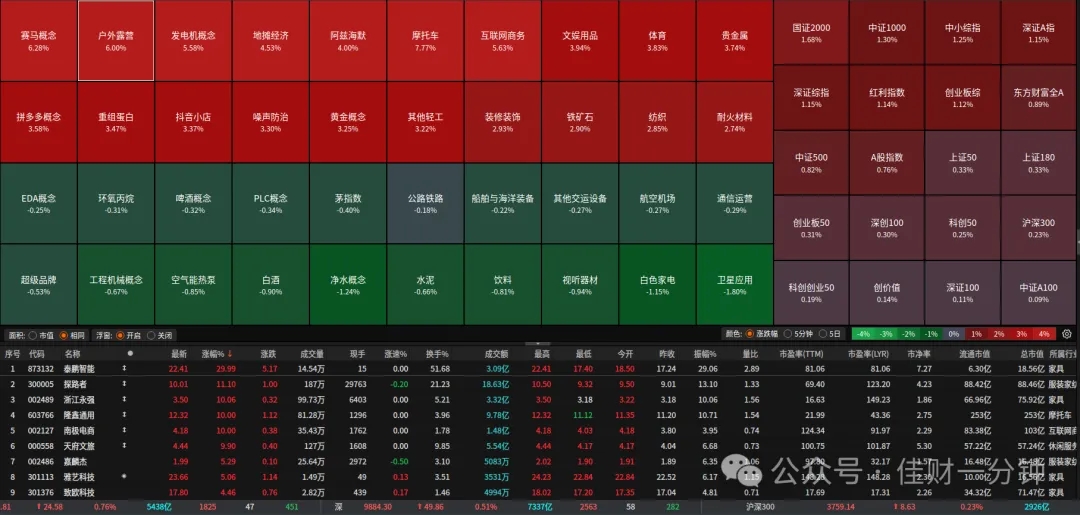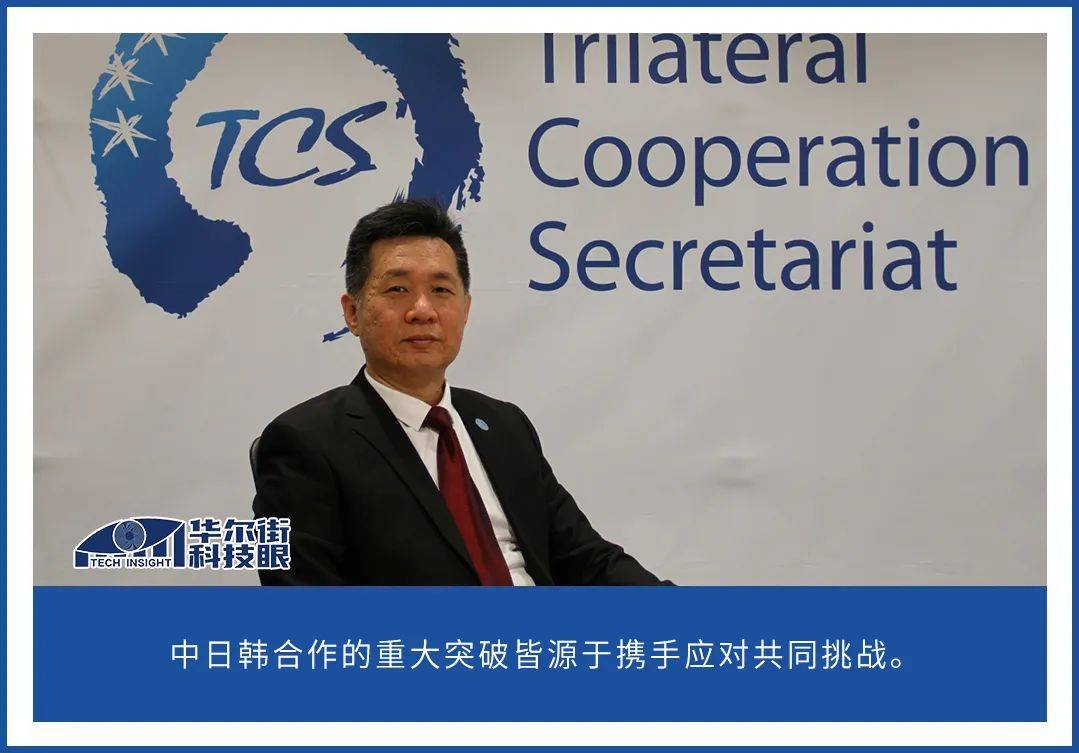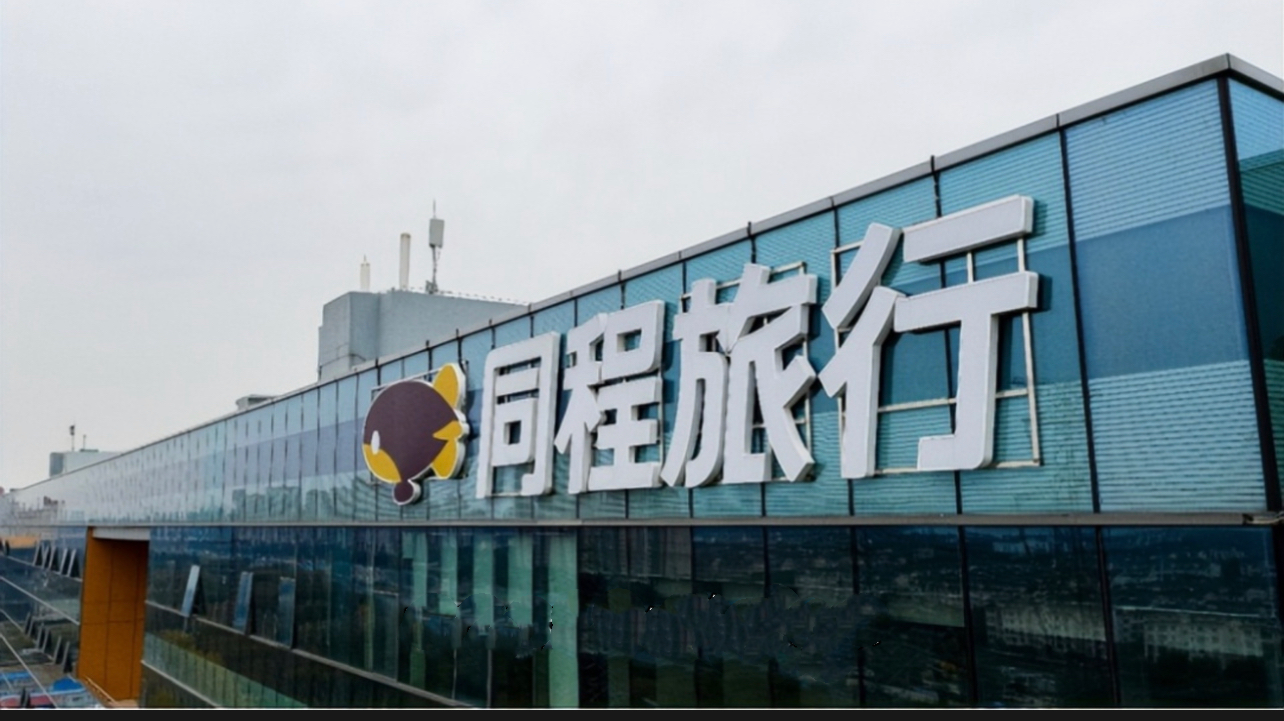Facebook Inc (纳斯达克:FB) 2021年第1 季度盈利电话日期为 2021 年 4 月 28 日。
企业参与者:
黛博拉·克劳福德-投资者关系副总裁
马克·扎克伯格-创始人、董事长兼首席执行官
谢丽尔·桑德伯格-首席运营官
戴夫·韦纳-首席财务官
分析师:
布赖恩·诺瓦克-摩根士丹利-分析师
贾斯汀邮报-美国银行-分析师
道格·安穆特——摩根大通——分析师
罗斯·桑德勒——巴克莱——分析师
优素福·斯夸利-特鲁斯特证券-分析师
约翰·布莱克利奇-考恩-分析师
劳埃德·沃尔姆斯利-德意志银行-分析师
科林·塞巴斯蒂安-贝尔德-分析师
迈克尔·纳森-莫菲特纳森-分析师
介绍:
主持人
下午好。我的名字是法国,我今天将是你们的会议运营商。此时,我欢迎大家参加 Facebook 2021 年第一季度收益电话会议。[操作员说明]
Facebook的投资者关系副总裁黛博拉·克劳福德女士,你可以开始。
黛博拉·克劳福德-投资者关系副总裁
谢谢。下午好,欢迎收听 Facebook 第一季度收益电话会议。今天和我一起讨论我们的结果的是首席执行官马克·扎克伯格:谢丽尔·桑德伯格,库奥;还有首席财务官戴夫·韦纳
在我们开始之前,我想借此机会提醒你,我们今天的讲话将包括前瞻性发言。实际结果可能与这些前瞻性陈述所设想的结果存在重大差异。可能导致这些结果出现重大差异的因素在今天的新闻稿和我们提交给 SEC 的 10-K 表格年度报告中都有规定。我们在此电话上发表的任何前瞻性声明都基于今天的假设,我们不承担因新信息或未来事件而更新这些陈述的义务。
在此通话中,我们可能同时提出公认会计原则和非公认会计原则财务措施。在今天的收益新闻稿中包括公认会计原则与非公认会计原则措施的对账。新闻稿和随附的投资者介绍可在 investor.fb.com 的网站上找到。
现在我想把电话转给马克。
马克·扎克伯格-创始人、董事长兼首席执行官
各位,感谢您今天加入我们。在我们开始之前,我只想花点时间说,我们非常担心印度和巴西的COVID局势。我希望我们能尽快控制住这种病毒,同时,我们专注于我们能做些什么来帮助那里。
现在转向结果。这是另一个强劲的季度,超过 27 亿人现在每天使用我们的一个或多个应用程序,超过 2亿家企业使用我们的工具接触客户,这已经是第 10 年了。我感到自豪的是,我们继续为世界各地的人们和企业提供价值。在过去的几个季度里,我们的业务表现比我们预期的要好。这让我们有信心在几个关键领域有意义地增加我们的投资,这些领域有可能改变公司的长期发展轨迹。
因此,在今天的通话中,我将讨论我们在增强现实和虚拟现实以及商业、商业信息传递和创作者方面所追求的机会。首先,让我们来谈谈构建下一个计算平台。我相信,增强现实和虚拟现实将比任何现有平台都更深入地感受到存在和社会联系。它们将成为我们未来如何与计算机交互的重要组成部分。因此,我们今年将继续投入巨资打造最佳体验,这占了我们整体研发预算增长的主要部分。
任务2做的比我们预期的要好,即使在假期之后。我们继续看到良好的参与度,我们不断发送更新,使Quest越来越好,包括Air Link,它能够从PC无线流的游戏和内容,并支持120赫兹刷新率。现在,在无线外形中实现Quest的高质量是一个重大突破,电线缠绕在你周围,只是真正打破了存在感和沉浸感。该技术在无线方面提供出色的体验是非常先进的,大多数公司将无法提供这种体验,但我们相信,这是高质量体验的最低标准。
本季度我们还分享了更多关于我们未来的投资,包括用于与AR交互的神经接口,我们开始测试我们新的阿凡达系统,这将是人们表达自己和连接方式的关键部分。一个有趣的趋势是,我们看到应用程序生态系统扩展到游戏以外的其他类别。最常用的应用程序是社交,这符合我们原来的理论,为什么我们想建立这个平台摆在首位。我们还看到了生产力,甚至健身应用程序。例如,我们推出了一个工具,让人们可以订阅FitXR等服务,在VR中做拳击和舞蹈,就像他们在佩洛顿骑自行车一样。我们引入了应用实验室,因此开发人员可以直接向消费者发送其应用的早期版本,而无需经过 Oculus 商店和应用实验室与 PC 流之间,我们在应用商店的更开放模式中处于开创性,这些模式目前在手机上可用。
随着时间的推移,我期望增强现实和虚拟现实能够释放出巨大的价值,无论是在人们的生活还是整个经济中。这里还有很长的路要走,我们大部分投资都摆在我们面前。但我认为,我们从产品中获得的反馈让我们更有信心,相信我们对未来的预测将在这里发生,并且我们专注于正确的领域。
现在,除了AR和VR之外,我想找出一些我们真正关注的其他长期机会,特别是在商业和商业信息方面。一段时间以来,我们的服务业务一直在增长,但随着大流行加速了向在线企业更广泛转移,商务变得更加重要。去年,我们看到网上店面保持开放,即使实体店关闭,未来在线商务将继续提供越来越个性化和方便的体验。商业广告继续做得很好,并推动了我们整体业务的有意义数量。我们已经将市场建设成为全球领先的供人们买卖的服务之一。今天,我很高兴地分享,每月有超过10亿人访问市场。现在,我们正在投资建设商业的未来。因此,我们去年推出了商店,正如我最近分享的,现在有超过100万每月活跃的商店和超过2.5亿每月商店访客。
我们还专注于在我们的应用程序上构建更多本地商务工具。我们最近更新了 WhatsApp 目录,以便企业可以从计算机中更新它们,并包括库存。我们去年在 Whatsapp 上推出了手推车, 人们用它们发送订单超过 500 万次。我们还在建设更广泛的基础设施,以支持商业,从支付到客户服务和支持,WhatsApp 付款现在在印度,我们已获得巴西的批准,不久也将推出。
我们开始看到人们与企业沟通的方式发生了有意义的转变。对很多人来说,网上商务不是我们的网站和商店,而更多的是关于消息传递的。因此,人们希望从聊天中获得支持并直接进行购买。小型企业希望展示其产品并通过消息接受订单,而大型企业希望可靠、安全的基础设施能够与客户沟通。使用 WhatsApp 业务 API 的企业,在 COVID 高峰期,在过去一年中每天发送超过 1 亿条消息,信使和 Instagram 上的人和企业之间的日常对话增长了 40% 以上。超过 300 万广告客户已经使用 Click 向广告发送消息,将用户引导到 Messenger,自从我们推出"点击 WhatsApp 广告"以来,已有近 1 家广告客户开始使用它们。现在,在下一步,我们将有可能直接在 WhatsApp 业务应用中创建 WhatsApp 广告。
下一步是使企业更容易采用所有这些服务,并为他们提供能够处理消息和客户关系的工具。我们对客户的收购正在通过监管部门的批准,我们期待着为企业提供一种本地方式来管理我们平台上的客户关系。
现在,我想清楚的是,我们还有很长的路要走,以建立一个完整的特色商业平台,在我们的服务,这是一个多年的旅程,但我非常致力于达到目标。这种现代商业系统将汇集许多领域,我们要么已经拥有强大的产品,如广告、社区工具和消息传递领域,如商店、商业信息和支付领域,而我们现在正致力于增加这些领域。作为其中的一部分,我们还在为我们的产品建立更好的客户支持方面进行更多的投资。在过去的几年里,我们非常注重内容节制和隐私工作,我认为客户支持是我们服务信任和安全工作的下一个支柱。
我今天最不想讨论的领域是创作者。我认为,对经济未来的积极愿景是让更多的人从事他们喜欢的创造性工作,而不是他们不喜欢的工作。为了达到这个方向,我们需要在货币化工具上建立创造性的,以支持这个创造者经济。从长篇写作到实时对话,从纪录片到增强现实过滤器,人们在我们的服务中创造了一套令人难以置信的多样化内容,我们的目标是支持人类的全方位表达,并成为数百万创作者谋生的最佳平台。现在,其中的一部分将是提供一套工具和产品,涵盖人们想要创建和消费内容的所有方式。我相信,每一种媒体类型和每一个受众规模的交集,都有一个令人信服的体验来建立。
例如,我最近讨论了我们的音频路线图,我们已经支持私人音频通信的音频呼叫,但现在我们也在建设实时音频室,我们认为这将特别有利于团体和社区。我们正在构建声音咬分享和广泛消费短格式音频剪辑,我们支持播客共享和收听长格式音频。我们还与 Spotify 合作, 在 Facebook 应用程序中推出一个音乐播放器。因此,我们还需要将这些体验与货币化的简单选项联系起来,无论是订阅、小费还是使创作者能够提供产品推荐并实现商业。
通过 Instagram 和 Facebook,我们拥有将创作者和商业聚集在一起的独特能力,我们将在今年晚些时候分享更多。这些围绕创造者、商业和下一个计算平台的努力是未来我们翻倍的一些大领域。在每一个,有一个独特的机会,以帮助人们以更深层次的方式连接和支持一个更强大的经济为每个人。我乐观地认为,我们在所有这些领域的工作将有助于加速我们在世界上看到的积极新兴趋势。
现在,我要把它交给谢丽尔。
谢丽尔·桑德伯格-首席运营官
谢谢,马克,大家好。我希望你们都安全健康。对于我们的业务来说,这是一个非常强劲的季度。我们第一季度的总收入为262亿美元,同比增长48%。我们看到所有区域都有良好的增长,在大流行期间表现良好的垂直行业继续取得强劲成果。像电子商务,零售和CPG。
随着越来越多的企业转向在线,我们的表现在很大程度上是由持续的数字化转型推动的。多年来,我们投资于支持这种转变的产品和工具,这些投资帮助许多企业在流感大流行期间重塑了自己。我工作最好的部分之一是,我可以见到中小企业主,听听他们在想什么。他们中的许多人告诉我他们是如何利用 Facebook 来适应和成长的。在本季度与底特律中小企业的虚拟圆桌会议上,丽莎·约翰逊经营着一家名为LJ Essentials的全天然护肤品公司,当COVID受到打击时,她不得不关闭自己的商店,她创办了一个名为"花园"的Facebook小组,目前拥有1000多名会员。他们给她的产品的想法,当她做项目,他们建议,她说,他们卖得比她能保持他们在货架上快。通过在网上转来转去,她已经能够取代她从商店失去的所有收入。
我还和伊多·拉斯谈过,他在安阿伯附近经营一家瑜伽工作室。大流行期间,她开始上户外课,需要把这个词说出来。她负担不起给城里的每个人做广告的费用。不是每个城市的人都想做瑜伽,所以她使用个性化的广告。这使得她能够向该地区对瑜伽或冥想感兴趣的人做广告。这一切都以受隐私保护的方式完成。我们向这些人展示她的广告,我们不与她分享他们的信息,然后他们注册了她的班级。
像其他人一样,我交谈过的企业主想知道接下来会发生什么。许多人在网上订购。因此,即使事情完全重新开放,他们希望能够做更多的在线比他们以前。因此,可以理解的是,他们问我们,我们能做些什么来帮助他们不只是现在,但从长远来看。部分答案是继续改进我们的工具和产品,并创造新的工具和产品,以满足他们的需求。部分原因在于帮助他们驾驭即将出现的逆风,无论是 iOS 14 变化还是潜在监管。
第一部分,工具和产品。我们都进入从第一天的COVID,我们快速跟踪我们的工作,以帮助人们在网上买卖。最初,我们专注于为卖家提供合适的体验。正如马克所说,我们近一年前就推出了商店。我们继续开发新功能,以帮助个性化购物体验,并与合作伙伴合作,使交易尽可能无缝。我们创建了新的格式,如实时购物,这使我们的平台可以提供的独特商务体验栩栩如生。现在,我们同样专注于获得适合消费者的体验。我们正在更多国家推出 Shop 标签,并探索新的身临其境的格式,如产品标签和贴纸,让更多的人与他们喜爱的创作者和品牌一起购物。
我们还在不断开发和改进我们的广告产品,以帮助企业接触他们所处的位置,并获得尽可能好的投资回报。我们继续看到我们大量投资的故事广告和视频广告的强劲增长。我们还在 Facebook Watch 的广告中看到了强劲的增长,目前每月访问量超过 12.5 亿人次。随着观看视频的人数不断增加,我们正在为企业和创作者提供更多机会来接触他们。我们正在将付费在线活动扩展到更多国家/我们正在让更多的人投放流媒体广告,包括实时视频广告,我们正在开发短篇视频广告,我们正在测试内容创作者通过看起来像贴纸的广告来赚钱的能力。
在第二部分逆风。是的,个性化广告面临挑战,我们对此持开放态度。我们正在做大量的准备工作。我们正在与客户合作,实施 Apple 的 API 和我们自己的聚合事件测量 API,以减轻 iOS 14 更改的影响。我们正在重建我们的广告技术的有意义的元素,以便我们的系统在未来访问较少的数据时继续执行。我们与 W3C 等行业机构就隐私增强技术等举措进行了长期合作,这些技术提供个性化体验,同时限制对人们信息的访问。我们还需要继续制作个性化广告,这对人们和企业都有好处,并更好地解释它是如何工作的。让人们意识到个性化广告是隐私保护。
小型企业不必仅仅为了遵守首字母缩略词的字母汤而理解,但它们确实需要有信心,他们仍然可以使用我们的工具,以安全的方式接触那些想要以隐私安全方式购买所售产品的人们。我们相信他们能够而且随着数字广告的发展,他们能够继续取得巨大的成果。随着疫苗的推出,人们有理由充满希望,但大流行仍然给许多国家的人们,特别是像马克一样的人带来真正的心碎和困难,我现在的想法是与我们在印度和巴西的朋友和同事在一起的。
如果说去年教会了我们什么,那就是不做假设,也不指望事情会同时变得更好。无论发生什么,我们将继续保持人与人的联系,支持公共卫生应对,并投资于支持企业现在和长期的方式。
最后,我想说,我是多么感激所有与我们合作的企业,无论大小,每天学习。还有我们令人难以置信的团队,他们通过这个动荡的时间支持了数百万家企业,并为现在和将来的成功做好了准备。
现在交给戴夫
戴夫·韦纳-首席财务官
谢谢谢丽尔,大家下午好。第一季度是我们业务的强劲季度,得益于数字经济的持续增长,以及我们在帮助企业与消费者进行跨服务互动方面持续取得成功。
让我们从我们的社区指标开始。我们估计,3月份约有27亿人每天至少使用我们的一项服务,大约34亿人每月至少使用一项服务。请注意,这些第 1 季度家庭指标反映了最近用户调查的新数据。有关我们家庭指标的更多详细信息,请包含在我们的 IR 网站上的收入幻灯片中。
我们的全球社区继续增长,尽管我们去年第一季度与大流行相关的用户增长有所加快。Facebook每日活跃用户达到18.8亿,比去年增长8%或1.44亿。在3月份的28.5亿每月活跃用户中,DAUs约占66%。与去年相比,毛额增加了2.5亿美元,增幅为10%。
转向财务。除非另有说明,否则所有比较均按年进行。第一季度总收入为262亿美元,按固定汇率计算增长48%或44%。我们受益于货币逆风,如果汇率与去年第一季度持平,总收入将减少7.06亿美元。第一季度广告收入为254亿美元,按固定汇率计算增长46%或42%。广告收入的增长主要得益于在线商务等产品垂直行业持续走强。在所有广告客户规模中,增长都是基础广泛的,中小型广告客户尤其具有优势。
我们的广告收入同比增长也得益于去年3月大流行相关需求逆风的蔓延。从用户地理位置来看,所有地区的广告收入增长都加快了。欧洲增长最强劲,为53%,世界其他地区、亚太地区以及美国和加拿大分别增长47%、46%和42%。欧洲和亚太地区受益于货币逆风,而世界其他地区继续面临货币逆风。第一季度,我们服务的广告展示总数增加了12%,每个广告的平均价格增加了30%。增长是由英斯塔格拉姆和Facebook网推动的。每个广告的平均价格上升的主要原因是价格水平与一年前一样低迷,以及广告客户需求强劲。
Other revenue, was $732 million, up 146% driven by continued strong Quest 2 sales. We’ve been encouraged by the sustained strength we’re seeing with sales of Quest 2 since its October launch.
Turning now to expenses. Q1 total expenses were $14.8 billion, up 25% compared to last year. In terms of the specific line items. Cost of revenue increased 48%, driven mostly by core infrastructure investments, hardware costs related to Quest 2 sales and payments to partners. R&D increased 29%, driven mostly by hiring to support our core products and consumer hardware efforts. Marketing and sales increased 2% with growth in hiring, partially offset by lower marketing spend. Lastly, G&A expenses increased 2% with growth in employee-related costs, partially offset by lapping higher bad debt expenses related to COVID in the first quarter of last year. We added over 2,000 net new hires in Q1, primarily in technical functions. We ended the quarter with over 60,600 full-time employees, up 26% compared to last year.
First quarter operating income was $11.4 billion representing a 43% operating margin. Our tax rate was 17%. Net income was $9.5 billion or $3.30 per share. Capital expenditures, including capital leases were $4.4 billion, driven by investments in data centers, servers, network infrastructure and office facilities. Free cash flow was $7.8 billion. We repurchased $4.1 billion of our Class A common stock in the first quarter and we ended the quarter with $64.2 billion in cash and marketable securities.
In terms of sustainability, I’m pleased to report that Facebook’s global operations have now reached net zero emissions and are 100% supported by renewable energy. This is an important milestone for our business, but we also recognize there is more work to do in the years ahead. And we remain committed to our next goal of decarbonizing our entire value chain in 2030. Additional information on our ongoing efforts across environmental, social and governance areas can be found in our recently filed proxy statement.
Turning now to the outlook. We are pleased with the strength of our advertising revenue growth in the first quarter of 2021, which was driven by a 30% year-over-year increase in the average price per ad and a 12% increase in the number of ads delivered. We expect that advertising revenue growth will continue to be primarily driven by price during the rest of 2021. We expect second quarter 2021 year-over-year total revenue growth to remain stable or modestly accelerate relative to the growth rate in the first quarter of 2021 as we lap slower growth related to the pandemic during the second quarter of 2020. In the third and fourth quarters of 2021, we expect year-over-year total revenue growth rates to significantly decelerate sequentially as we lap periods of increasingly strong growth. We continue to expect increased ad targeting headwinds in 2021 from regulatory and platform changes, notably the recently launched iOS 14.5 update, which we expect to begin having an impact in the second quarter. This is factored into our outlook. There is also continuing uncertainty around the viability of transatlantic data transfers in light of recent European regulatory developments and like companies across a wide range of industries, we are closely monitoring the potential impact on our European operations as these developments progress.
Turning now to expenses. We expect 2021 total expenses to be in the range of $70 billion to $73 billion, updated from our prior outlook of $68 billion to $73 billion. The year-over-year growth in expenses is driven by investments in technical and product talent, infrastructure and consumer related costs. We remain committed to investing for long-term growth and our expense outlook reflects the underlying strength of our business and the compelling investment opportunities we see across our products including consumer hardware. We expect 2021 capital expenditures to be in the range of $19 billion to $21 billion, down from our prior estimate of $21 billion to $23 billion. Our capital expenditures are driven primarily by our investments in data centers, servers, network infrastructure and office facilities. Turning now to tax. We continue to expect our full-year 2021 tax rate to be in the high teens.
In closing the pandemic during the past year has presented some incredible challenges to our global community. During this time, we have worked to help both businesses and consumers stay connected. We remain focused on helping people and businesses navigate the transition out of the pandemic as more regions reopen.
With that France, let’s open up the call for questions.
Questions and Answers:
Operator
Thank you. We will now open the lines for a question-and-answer session. [Operator Instructions] Our first question will be from the line of Brian Nowak with Morgan Stanley. Please go ahead.
Brian Nowak — Morgan Stanley — Analyst
Thanks for taking my question. I have two. The first one, just curious for a little self-report card if you will around commerce. You made a lot of progress around the million Shops, 250 million Shop visitors, where would you say you’ve made the most progress for advertisers and merchants so far. And then as you sort of look into the back half and into ’22, what are the biggest areas of innovation that you’re really focused on to continue to grow that number? Maybe talk about non-advertising monetization optionality? And the second one I had is around as we — I know it’s early in the reopening but, would be curious to hear about what you’re seeing from an engagement or time spent perspective of your user base in the areas of the world that a little bit more reopened and how you’re thinking about that in the back half?
Sheryl Sandberg — Chief Operating Officer
I can start on the first. So there is a lot of commerce activity on our platform already. People really discover lots of products through our feed and ad stories. They are seeing in Stories ads. It’s been our largest ad vertical. COVID really accelerated it, but it’s been one of the fastest growing verticals we’ve had over the last five years, and we believe that Facebook drives hundreds of billions of dollars of offsite e-commerce GMV today through our ads business. So we’ve certainly made a ton of progress there and our goal going forward are; we want to continue to be the very best place to advertise. We’re going to have to do work to do that, as I mentioned in my remarks that we can still use data in a privacy stealth way, get the right apps to the right person at the right time. But we think we are market leaders here.
The other work we’re doing and Mark talked about it in his remarks and I did as well, is to make it easier to sell on our platform. Now the shopping experience is really well defined in other places and we are later to that than we work at ads. So we know we have a lot of work to do. We’re working with partners to build some of the parts of the experience that we’re not as expert in and we’re integrating and we’re integrating products like Shops. We have more than 1 million active shops and more than 250 million people interacting with merchandise per month. So we’ve made some good progress, but we recognize that getting to a really seamless transaction experience is going to take work on our side and we’re going to continue to invest there.
I think another area where we do have to do more, is we have to improve the consumer experience to help people transact on the platform. And we’ve done I think more work on the business side and the integration side, and now we are focused on continuing to build that and continuing to balance out the consumer experience. For the foreseeable future, ads are going to be the vast majority of our revenue in this area and that commerce vertical is so important to us. We don’t need commerce itself or fees that are take part of what happens in order to make the investment worthwhile, but we really have to focus on helping more businesses move online and have a great experience on our platform and that along with ads makes this a very worthwhile investment for us.
Dave Wehner — Chief Financial Officer
Hey, Brian, it’s Dave. I’ll take the second question. So I think broadly what we’re seeing is just engagement trends that are going back to a more normalized level. So if you think about the past year it’s been pretty noisy because of COVID. In the first quarter of 2020, we saw a significant increase in engagement as a result of the pandemic and we’ve seen some of those trends subside as the year progressed. And we saw a gradual phase down of lockdowns. I don’t think anything hugely dramatic, but it’s certainly something that we’re seeing in the engagement trends and that’s one of the factors that’s playing into price being a bigger driver of growth on the revenue side, because of the impression growth being lower and I’d say COVID is certainly a factor in that.
On the revenue front, I think, there we’re seeing continued strong demand with products and even — and then we’re seeing services spend come back. So I think that’s kind of a quick landscape of what we’re seeing with the COVID impacts.
Operator
Our next question is from the line of Justin Post with Bank of America. Please go ahead.
Justin Post — Bank of America — Analyst
Great, thank you. Maybe one for Mark and one for Dave. I think there has been some questions on engagement just because you see the strong growth of things like TikTok or maybe Snap, but you’ve built some super platforms within Facebook with the Watch usage in marketplaces. Could you comment on what you’re seeing with overall engagement and as people use these new platforms. Is it growing, time spent on other factors. And then the second question maybe to Dave, any surprises with the iOS 14-5 update? And any comments on what you — what you’ve seen with users who have already opted out of tracking before this update? Thank you.
Dave Wehner — Chief Financial Officer
Hey, Justin, it’s Dave. Yes, I can take both of those. So, yes, on the impression growth front, I think we’re seeing a couple of factors we talked about the COVID impact and the return to more normal levels and that’s affecting some of the impression growth. The second factor that we’re seeing and it kind of gets it some of your question, which is we’re seeing really strong engagement on video, particularly internationally. And that’s — we’re pleased with that. I’d point to a couple of examples there, I’d say Facebook Watch and we talked about the 1.25 billion users. Also Reels is starting to get traction on — and doing well on Instagram. Video currently has relatively fewer impressions on a time spent basis. So that’s playing into the engagement trends as well. And then finally, I would say, we are seeing competition in News Feed from both our own video products and also others products as well. So that’s factoring into it.
And then, your second question was regarding any surprises with iOS 14.5. Look, I think it’s really early they just began rolling out the updates. So it’s sort of very, very low kind of penetration rates of the new OS at this point. But a couple of things, I’d say, we continue to be concerned about the impact that this update is going to have on the ability of small businesses to use their advertising budgets effectively. That said the impact on our own business, we think will be manageable. We continue to expect it will be a headwind for the remainder of the year, but we’re making encouraging progress as Sheryl mentioned on our own solutions to help advertisers navigate these changes and that includes helping advertisers work with the Apple API as well as our own approach to using aggregated data for targeting and measurement that we call Aggregated Events Management. So the goal there is really to maintain and in the long run even improve performance with less data.
So — and then I’d also add just in addition to these mitigations, we’re also just seeing very strong overall ad demand, which is contributing to a more positive outlook for 2021. And I would say just overall, the impact of these — the specific iOS 14 changes are one element of some of the challenges with Apple. But we think the impact of the Apple approach is really much bigger than this particular update around third-party data usage. Apple has a number of private APIs on hardware and software that advantage their around products and services in ways that are challenging. And we face that issue with — in places like our messaging products and even with the hardware products we’re launching. So we generally don’t think that this closed approach is the best one for the industry from an innovation perspective. Go ahead France, next question.
Operator
Our next question from Doug Anmuth with JPMorgan. Please go ahead.
Doug Anmuth — JPMorgan — Analyst
Thanks for taking the question. One for Mark. Mark, you highlighted the three areas where you’re doubling down across AR and VR, commerce and the creator economy. Hope you could talk about whether you view these efforts has helping Facebook control its destiny more as a platform, perhaps giving you more first-party data and whether they insulate you from other ecosystems over time? Thanks.
Mark Zuckerberg — Founder, Chairman and Chief Executive Officer
Sure, I can talk about that. I think we mostly think about these things from the perspective of improving the experiences that we can build. So augmented and virtual reality, I have thought about for a long time, because I think that it’s sort of the Holy Grail of delivering a sense of presence and the types of social experiences that you would want to build. So right now, and I guess for the whole history of the company, we’ve been constrained to a web browser and now in some cases it is increasingly restrictive mobile app rule. But I think that this future environment where you’re going to be able to feel like you’re really present with someone else, that’s going to be really powerful and it’s going to unlock a bunch of experiences that we wanted to build for a long time and that’s what I’m really excited about.
Similarly on the commerce side, part of this is motivated by wanting to help out small businesses and different businesses sell more across our platform and a lot of it is also just about making the consumer experience better. So right now, a lot of times you’ll click on an ad, you’ll see an interesting ad and it will take you to a website, and the website won’t necessarily have full context on who you are, the payments experience will be clunky in doing that. And there’s just an opportunity I think to make that all a lot more seamless. And when it is seamless it bodes as a better experience for the people using it within lot of converts better for the businesses and performs better.
So I think the way we’re going to approach this is largely from starting with having built out this very robust ad system and then just basically working our way down the experience from there. So making it so, so businesses and creators can have Shops and that the ads can then link into Shops and have a native shopping experience and that over time we will also increasingly — as our payment systems get better and better and more people have credentials on file, I would imagine that going all the way through the funnel will become an increasing part of what people do and that will both be a better experience for consumers and convert better for businesses.
Similar story on the Creator side. Here our main goal is not necessarily that the Creator economy is a major business by itself, but if we become the best place for creators to make a living, then I think that’s going to mean that there is better content across the services and better opportunities for community building and engaging people and that’s what we care about. But of course, if there is more engagement and if creators are finding that there are good opportunities to monetize then they’ll engage more with our business products too and there will be some opportunity there. But, I kind of think about all this stuff from the perspective of improving the products. And I think that that’s going to lead to a lot of benefits for all of the stakeholders over the next several years.
Dave Wehner — Chief Financial Officer
Thanks, Mark. France, we can go ahead and go to the next question.
Operator
Our next question is from the line of Ross Sandler with Barclays. Please go ahead.
Ross Sandler — Barclays — Analyst
Hey. Question for Mark. So this — I think recently this week, there were congressional hearings on this concept of algorithmic amplification or how algorithms on Facebook or Instagram surface content to kind of maximize engagement and sometimes that means some of the more controversial content is what gets surfaced. So first off, is that a fair characterization? And if you guys were forced to maybe change up the way all these algorithms work, what might — what kind of impact will then actually have on engagement? I mean 10 years ago, the new seat was coming for the whole story. But now we’re talking about many different areas within the apps. So how much is from this algorithmic driven content versus utility style engagement like going into Messenger or going into marketplace or something that’s just kind of an everyday behavior? Thanks a lot.
Mark Zuckerberg — Founder, Chairman and Chief Executive Officer
Sure, I can start taking this some and then Wehner you can jump in if you want to add anything. Overall, I think the narrative that you are pointing to is dramatically overstated by critics. We do not optimize our systems to increase the amount of time spent in News Feed, I explicitly do not give our News Feed team or the Instagram feed team goals around time spent. Our belief is that if we build a product that is more valuable, then people will engage more, but you should start by trying to build something that’s more valuable, not by trying to increase the time that people are spending. So we’ve done that for years and I think it’s yielded good results. So from that perspective, I know that what you’re saying is something that that some folks like to go around and say, but I actually think that the more of that, different regulators or other folks dig into this. I actually think that our practices here are quite robust and we don’t want extreme — extremist content or any of that stuff on our services. So if anything to the contrary of trying to promote that, we go out of our way to try to reduce that. And I think that contrary to what a lot of these other folks say, it is actually in our business interest to reduce it, because people don’t like it right? I mean, consumers don’t like it. Advertisers don’t want to be near it. So I don’t actually think that this kind of narrative about the company is accurate, and we’ve tried to hard to dispel it. I don’t think we’ve been super successful at that. We will continue trying to work on that, but just to kind of be clear about how I see things that’s, that’s the basic download.
I think News Feed is still a huge part of the product and the home feed and Instagram but increasingly, stories is a big deal and Instagram a lot of people are using Explorer and IG TV, Video and Watch on Facebook are quite big. And as you say, a lot of people spend a lot of their time and attention is in messaging apps and private interfaces like that as well. So I meant there are a lot of different things that people are doing across the services, but Wehner can jump in with any more color on that that he wants to add.
Dave Wehner — Chief Financial Officer
I mean, the only thing I’d add here as Mark said, I think more than anyone else in the industry we invest on the safety and security side to sort of keep that content off the site before it gets ranked and put into what people see. So we’ve got 35,000 — over 35,000 people on the safety and security side. We’ve got the most robust set of content policies out there. We do a quarterly call, public call around our content review process and procedures. So I think that — on the front before it even gets into the algorithm, I think we really do more than anyone else in the industry on the safety and security front to prevent things like misinformation and bad content going into the system in the first place.
主持人
我们的下一个问题来自优素福·斯夸利与特鲁斯特证券的路线。请继续。
优素福·斯夸利-特鲁斯特证券-分析师
太好了,非常感谢。我有一个关于马克VR的两部分问题。马克,你已经谈论VR很长时间了,基本上每个季度。我只是想知道发生了什么, 这个特定的季度, 这是迫使你想加倍的虚拟现实。这个季度可能实现的是什么——让你想要这样做?我想更重要的是,与此相关的是,Facebook是否需要拥有一个工作室,或者一系列工作室来加速内容的推出,这应该有助于推动采用,因为另一个摩擦点是价格,你已经将单位降低到299,这是一个非常有吸引力的价格?谢谢。
马克·扎克伯格-创始人、董事长兼首席执行官
我可以从这个开始, 然后韦纳可以跳到第二点, 如果你想添加任何东西。在什么改变了,我认为这里的大piece是,任务2做得很好。我的意思是,我不想夸大其内容,因为我认为与那些平台相比——今天取得了巨大的成功,这显然是在小端。但是,在收养和参与方面,我们看到一个非常真实的拐点与任务2。感觉就像我们打的质量栏和我们打的价格,事实上,我们能够做到这一点的无线外形。但我认为,首先,我认为要满足这些不同的属性,对其他人来说都是非常困难的。
其他人可能会试图运送的东西,他们声称是更高的质量,但有一个电线,我只是不认为消费者会想去。因此,我们将看看这一切的结果如何。但我也只是看看团队是如何执行的产品,我们有在管道中,我想确保我们真的可以全力以赴,并交付这一点。但是,我认为,就我们所看到的进展而言,任务2是从任务1中迈出的有意义的一步。内容绝对是其中的一部分。我们在内部有一个团队,专注于两个第一方。我想在与制片厂建立合作关系时,这都是第一方、第二方和第三方的内容,这当然是其中的一个重要部分。我认为Quest是迄今为止VR内容的最佳阵容。我认为未来的路线图更加令人兴奋,一些未来几年将要发生的事情。
戴夫·韦纳-首席财务官
是的,马克,除了说我们一再呼吁对FRL进行投资外,我没有什么别的补充,Facebook现实实验室是我们支出前景的主要投资驱动因素之一。因此,这已经不是我们第一次把焦点放在这一点上。正如马克所说,这是工作室的一个持续投资领域,内容是其中很重要的一部分。法国,我们可以去下一个问题。
主持人
我们的下一个问题来自约翰·布莱克利奇和考恩。请继续。
约翰·布莱克利奇-考恩-分析师
太好了,谢谢两个问题一个在AR/VR标记上。在构建和投资平台时,您期望 AR VR 能够更广泛地采用哪种功能?什么样的最终推动快节奏的加速消费者采用?然后是戴夫的第二个问题一季度成本增速低于预期。你在中点稍微提高了整整一年。有什么东西可以叫出来吗?谢谢。
马克·扎克伯格-创始人、董事长兼首席执行官
所以,我会采取第一件,然后戴夫,也许你可以采取第二件。在何时将更多地采用这些平台方面,我认为很多都是关于外形和使用案例的。我的意思是,任务2我想是,我们有点击中一个关键点,但我认为,如果还有进一步,我们想去的形式因素,我认为无线部分是关键。所以我再说一遍因此,我认为,在获得可能更好的图形或其他产品方面,你可以做很多事情,但用电线,它真的伤害了出现的感觉,就像有一根电线缠在你的脖子上,而你正在做所有的事情。
但另一个大块是使用案例,这就是为什么我在开始的讲话中大声疾呼,我们看到的一个有希望的迹象是,它正在扩展到游戏之外。现在它仍然是主要的游戏,但当我们开始这个旅程,很多原因,我说,我认为它是有道理的,我们投资,是因为我希望虚拟和增强现实是一些最社会化的平台,建立和事实,今天在平台上最吸引人的体验是社会和很多顶级游戏是社交的。我认为这是非常有希望的,但也看到的东西在生产力[技术问题],就像我提到的,它只是真正有希望的,你看到这个成为一个更广泛的平台的早期迹象。因此,我再次没有夸大这些,因为这一切还很早,所有这些事情都需要发展出来,但从我的角度来看,这些都是非常有希望的迹象,随着这些迹象的不断发展,那么我认为这些平台将广泛适用于更多的人。
然后我想说的另一件事是,我们还没有真正到达那里的AR呢。我认为虚拟现实,外形的约束,我认为是有点小于你将有一个增强现实,在虚拟现实中,我认为你需要得到一个高质量的无线体验。在增强现实中,你真的需要一副看起来像普通眼镜的眼镜,才能达到主流的接受度,我认为这将是十年来最难的技术挑战之一,基本上就是在眼镜架上安装一台超级计算机。所以我不是一个非常令人兴奋的问题,我认为,一旦这是可以实现的,这方面的潜力将是相当大的。
戴夫·韦纳-首席财务官
然后,约翰,是戴夫。就第一季度的总支出,我叫出了一些项目在我的评论,但我认为你有几个因素。其一,与去年第一季度相比,营销支出相对较低,那里的增长较低,然后是你——我们有一笔坏账支出,我认为这对Facebook来说并不是独一无二的。我想你在其他一些公司也看到了这一点, 我们去年第 1 季度采取了与我们对 COVID 周围可收集性的期望有关。因此,这也考虑了对增长率的一些比较。
然后,当你看今年剩下的时间,几件事情。一是业务实力一般是给我们信心,我们正在寻找更多的投资领域。因此,我们将继续在 Mark 评论中概述的优先项目上进行研发投资,然后在今年剩余时间里,我们将看到营销等业务有所回升。因此,这正是您期待费用增长加速的动力。然后COVID比较是,是一点点。只是有不同的费用线与COVID的影响。因此,它有点嘈杂,以及。法国,你可以去下一个问题。
主持人
谢谢。我们下一个问题来自劳埃德·沃尔姆斯利与德意志银行。请继续。
劳埃德·沃尔姆斯利-德意志银行-分析师
谢谢。两个问题首先,谢丽尔,过去你曾谈到广告是一种相对的投资回报率收益。因此,当您考虑从 iOS 变化的转变时,可能会从运营中的短期逆风转变为潜在的逆风,因为其他渠道的广告相对而言会损失投资回报率。这是发生在几个月, 季度, 在一年内发生的事情, 比如谈论你如何看待潜在的演变。然后是第二个谢丽尔,你也谈到开始投入更多资金在购物方面积累消费者体验。因此,也许你可以带我们通过一些东西,你认为Facebook可以独特的带来电子商务,可能使一个新的更好的用户体验,是AR VR,是-什么东西,可以真正使Facebook脱颖而出的消费者在电子商务。
谢丽尔·桑德伯格-首席运营官
首先,相对投资回报率,你完全正确。人们要做广告了。他们将在电视上、电台、广告牌和不同的在线平台上做广告。他们正在寻找相对的投资回报率。这意味着,如果信号下降,它到处下降,我们竞争的方式就不同了。我们的目标是确保我们仍然可以做个性化的广告。我们确实认为,我们的相对竞争优势是,我们的广告更加个性化,这真的很重要,因为正如我分享的一些例子一样,大多数小企业,底特律的瑜伽工作室无法向底特律的每个人做广告,更不用说密歇根州的每个人,更不用说美国的每个人了。而且,广告使用,谁在那里,谁可能有兴趣瑜伽和冥想真的很重要。我们相信,我们仍将处于相对较好的位置。虚拟-基于不是所有的玩家,对不对,因为我们不是运行平台,但基于许多我们仍然会做得更好,比很多数字播放器。我们仍然会比电视或收音机做得更好。但是,当信号下降时,我们将不得不重建这种能力,这就是我所说的。
在时间方面,你特别问,我们真的不知道。iOS 14 更改是全新的。州一级、全球或区域一级或国家一级可能发生的监管变化尚未发生。因此,我们将不得不看到。我并不真正了解这些变化会是什么,它们现在将产生什么影响。因此,我们非常专注于竞争这些广告美元,并尽我们所能做到这一点。
在购物方面的消费者体验中,我们现在所在的商店,很多购物工具,我们已经得到了广泛的业务采用,这很好。我们不提供很多其他地方的全套工具,但越来越多的商店功能,人们正在采用。我们真的需要在消费者方面工作的经验。我认为我们在那里有独特的机会。你又问了一遍,就像我们的语言是什么——我想——是我的语言,不是你的语言,但我想你是在问,我们在这里的可持续竞争优势是什么?我们有很多人,做很多活动。我们越来越多地有人在寻找产品。我们越来越多地有人寻找产品。因此,我们一直强大的漏斗的顶部。我们能把人移下漏斗吗?我们认为我们可以,但这需要工作,人们还需要一些时间来适应。
但就长期的竞争优势而言,我们有很多人在寻找很多东西,分享很多东西,并继续寻找他们真正喜欢的东西。因此,我对我们在这里的机会非常乐观,但这需要真正的工作。
戴夫·韦纳-首席财务官
法国,你可以继续,去下一个问题。
主持人
我们的下一个问题是科林塞巴斯蒂安与贝尔德。请继续。
科林·塞巴斯蒂安-贝尔德-分析师
好的,谢谢,下午好。首先,Mark,也许作为VR和AR的另一个后续行动,以及现实实验室与您在商业、通信和创建方面提到的其他优先事项之间的连接或协同效应。我很好奇,如果这些是内部合作计划,还是在产品计划和开发方面仍然有些孤立?其次,一个结缔组织领域,以及,我认为是统一支付,只是好奇,这将是多么重要,使购物和交易的平台上,以及Diem和其他数字货币可能发挥什么作用的努力?谢谢。
马克·扎克伯格-创始人、董事长兼首席执行官
是的。它们是很好的问题。我认为,现在,我认为其轨迹是,当你很早就在平台上,这是有帮助的集中一堆发展紧密地团结在一起的组织,但随后随着事情开始建立起来,你希望得到参与构建的不同应用程序团队的全部能量,然后你想下放它更多。因此,正确知道,它仍然更集中的一面,但我想说,在未来一两年,我们肯定会产生更多的工作,整个公司,并有更多的工作,我们确实正在建设这些不同的平台。
就你的观点而言,其他类型的服务,这对商业、支付、Facebook Pay等都很重要,最终希望我们能推出Novi和——对不起,Diem很快,那就是,我认为这将是一件相当大的事情,这是非常重要的,因为所有的原因,你说所有这些平台的商业将是非常重要的,当然,在一个平台,我们正在建设这样的,我们希望使付款很容易做到这一点,经济学都工作为开发人员。
黛博拉·克劳福德-投资者关系副总裁
接线员,我想我们有时间回答最后一个问题。
主持人
非常好。我们的最后一个问题将来自迈克尔 · 内森森和莫菲特纳森的台词。请继续。
迈克尔·纳森-莫菲特纳森-分析师
太感谢了我有一个给马克,一个给戴夫。所以,马克,关于创造者经济的评论,我很感兴趣,因为有多少人专注于你的创意经济的不同部分?你在哪里看到的机会,你认为你可以是什么-你可以添加作为最大的增值的创作者,今天没有做?然后戴夫,关于拍卖的定价,我知道这是因为去年的简单比较。如果你看看两年的定价,它实际上是很好的上升,多年来,你一直在告诉我们,价格正在下降,因为混合变化,产品和地区。因此,如果你能给出一个关于实际推动定价的更新,也许在两年内会比它的趋势好得多?谢谢。
马克·扎克伯格-创始人、董事长兼首席执行官
我可以从谈论创造者经济作品开始。我知道这里有几个重要的组成部分,创作者需要。一个是创造性的工具,能够分享从任何类型的写作到音频到视频到所有这些不同的媒介的全方位表达。然后,第二个是将这项工作与大量受众联系起来,帮助人们找到他们的受众和社区。然后第三个是货币化。我想说, 我们可能是今天后两个最强的。我认为我们有创造性的工具,我们将在建造这些工具上投入更多资金。但是,当涉及到帮助人们接触到最大的受众或找到他们特定的受众时,我认为我们是世界级的。我认为我们是最棒的。
然后在货币化方面,我也认为,正如我们的业务结果显示的,我们在这方面非常有效。如果我们能把它用于创作者的工作,帮助他们从他们的工作中赚钱,那么这可以帮助实现这个目标,使数以百万计的人通过这种创造性的工作谋生。因此,我认为在这两件作品上,特别是在货币化方面,在帮助人们与他们特定社区建立联系和获得尽可能多的分配方面,我认为我们将做一些真正伟大和独特的工作来帮助很多创作者。然后,我们也会建立更广泛的工具套件,但我认为,这两个地方真的是我们进入这个运行。
戴夫·韦纳-首席财务官
迈克尔,我会回答第二个关于定价的问题。我认为——关于定价的真正简单故事是,对广告的需求刚刚高于我们的预期。我认为,如果你必须选择一个垂直的,这将是商业的表现优于。但这是一个——很明显,这和我们的商业努力是完全一成对的。但它确实是一个更广泛的故事, 真的几乎每个垂直是非常强大的。我认为我们仍然有点-我们仍然看到一些垂直的复苏,从COVID较弱,如旅游,但我们开始看到,我认为一些生命的迹象,在一些其他的垂直,受到COVID的负面影响,但真正只是全面强大的广告需求一直是推动它为我们。我认为,你谈到的两年比较是一个有用的比较,因为当你只看2020年与2021年相比,我们的年收入增长率有很多噪音。我认为,如果你做一个两年的比较——看看按季度计算的同比增长率,我认为,我们预计,在2020年,经济增长将更加正常化,而不仅仅是从疲软的季度中反弹过来,然后我认为,随着从比较基础到2020年,季度将相应走强。但是的,简单的故事广告客户的需求,比我们预期的要好。
黛博拉·克劳福德-投资者关系副总裁
伟大。再次感谢您今天加入我们。我们感谢您的时间,我们期待着再次与您交谈。
文章来源于外网,具体细节请以原文为主。

















 加载中,请稍侯......
加载中,请稍侯......